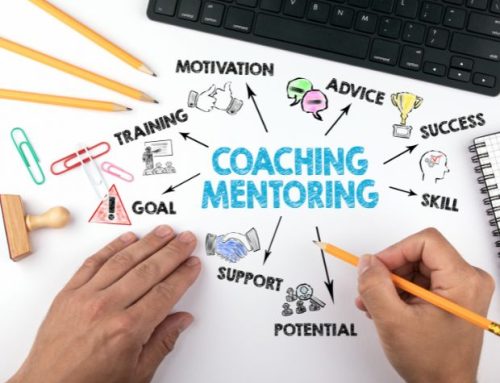Connecting with an audience, whether in a small meeting or a large conference, is a skill that can greatly enhance your professional and personal life. Engaging people, making them feel heard, and leaving a positive impression are essential.
Know about your audience
The first step to engaging any audience is understanding who they are. Before you even step onto the stage or enter the meeting room, do some research on your audience. What are their interests? What challenges do they face? What are their expectations from your presentation or talk?
By understanding your audience, you can tailor your message to resonate with them. This shows that you’ve put in the effort to connect on a personal level, which is the first step in getting them to like you.
Preparing your message
Once you know who your audience is, the next step is to prepare your message. Your message should be clear, concise, and relevant. Here are some tips to keep in mind:
- Start with a hook – Grab their attention right from the beginning with an interesting fact, a quote, or a compelling story.
- Keep it simple – Avoid jargon and complex language. Aim to communicate your ideas in a way that’s easy to understand.
- Be relevant – Make sure your message addresses the interests and needs of your audience.
- Use stories – People love stories. They make your message more relatable and memorable.
Engaging your audience
Engaging your audience is about more than just delivering a message. It’s about creating a connection and making them feel involved. Here’s how you can do that:
- Make eye contact – Eye contact helps to build trust and makes your audience feel like you’re speaking directly to them.
- Use gestures – Appropriate gestures can help to emphasize your points and make your presentation more dynamic.
- Move around – Don’t stay rooted to one spot. Moving around can help to keep the energy up and engage different parts of the audience.
- Ask questions – Asking questions encourages participation and shows that you value their input.
- Use humor – A well-timed joke or a light-hearted comment can break the ice and make you more likable.
Being authentic
Authenticity is key to building a connection with your audience. People can tell when you’re being genuine, and they’re more likely to respond positively. Here are some ways to be authentic:
- Be yourself – Don’t try to be someone you’re not. Let your personality shine through.
- Share personal stories – Sharing personal experiences can make you more relatable.
- Show vulnerability – Admitting mistakes or sharing challenges can make you seem more human and approachable.
- Be honest – Don’t try to bluff your way through questions or topics you’re not familiar with. It’s better to admit that you don’t know something than to risk losing credibility.
Listening to your audience
Communication is a two-way street. Listening to your audience is just as important as speaking to them. Here’s how you can be a better listener:
- Pay attention – Focus on what your audience is saying without interrupting.
- Show that you’re listening – Nod, smile, and use other body language to show that you’re engaged.
- Respond thoughtfully – When responding to questions or comments, take a moment to consider your answer. This shows that you value their input.
- Follow up – If someone asks a question you can’t answer on the spot, make a note to follow up with them later. This shows that you care about their concerns.
Building rapport
Building rapport with your audience helps to create a positive atmosphere and makes them more likely to like you. Here are some techniques to build rapport:
- Find common ground – Look for shared interests or experiences that you can relate to.
- Mirror their behavior – Subtly mirroring the body language and speech patterns of your audience can help to create a sense of familiarity and comfort.
- Use positive language – Focus on positive words and phrases to create a more uplifting atmosphere.
- Be approachable – Make yourself available before and after your presentation to chat with audience members.
Handling difficult situations
Not every interaction with an audience will go smoothly. Here’s how to handle some common challenges:
- Dealing with distractions – If someone is being disruptive, address it calmly and professionally. For example, you might say, “I’ll be happy to answer your questions at the end of the presentation.”
- Handling tough questions – If you’re faced with a difficult question, take a moment to think before responding. If you don’t know the answer, be honest and offer to find out.
- Managing nerves – It’s natural to feel nervous when speaking to an audience. Practice deep breathing, visualize a positive outcome, and focus on your message rather than your fears.
Using technology to enhance engagement
In today’s digital age, there are many tools available to help you engage your audience. Here are some ways to use technology to your advantage:
- Interactive polls – Use tools like Mentimeter or Poll Everywhere to get real-time feedback from your audience.
- Slides and visuals – Use PowerPoint, Keynote, or Prezi to create visually appealing slides that complement your message.
- Social media – Encourage your audience to share their thoughts on social media using a specific hashtag.
- Live streaming – If you’re speaking to a remote audience, use live streaming tools to reach a wider audience and interact with them in real-time.
Following up
The conversation doesn’t have to end when your presentation does. Following up with your audience can help to reinforce your message and build lasting connections. Here’s how to do it:
- Provide handouts – Give your audience handouts or digital copies of your slides and key points.
- Send a thank you note – Send a follow-up email thanking your audience for their time and participation.
- Offer additional resources – Provide links to articles, books, or websites that can help them learn more about your topic.
- Stay connected – Encourage your audience to connect with you on LinkedIn or other social media platforms.
Practice makes perfect
Finally, remember that practice makes perfect. The more you practice speaking to audiences, the more comfortable and confident you’ll become. Here are some tips for effective practice:
- Rehearse your presentation – Practice your presentation multiple times, preferably in front of a friend or family member who can give you feedback.
- Record yourself – Record yourself speaking and watch the playback to identify areas for improvement.
- Join a public speaking group – Consider joining a group like Toastmasters to practice your speaking skills in a supportive environment.
- Seek feedback – After each presentation, ask for feedback from your audience to learn what worked well and what you can improve.
Conversing with an audience and getting them to like you is a valuable skill that can open many doors. Remember to listen, build rapport, handle challenges gracefully, use technology to enhance engagement, follow up, and practice regularly. With these strategies, you’ll be well on your way to becoming a confident and likable speaker.
If you are looking for a public speaking coach in Ottawa to help you achieve your leadership potential, Sylvia Larrass Voice and Leadership Excellence is the best option. Their certified mentor offers unique ways of learning and they also help with all the materials provided by the coaching organization. Contact them via email or by calling 805-857-0777.




